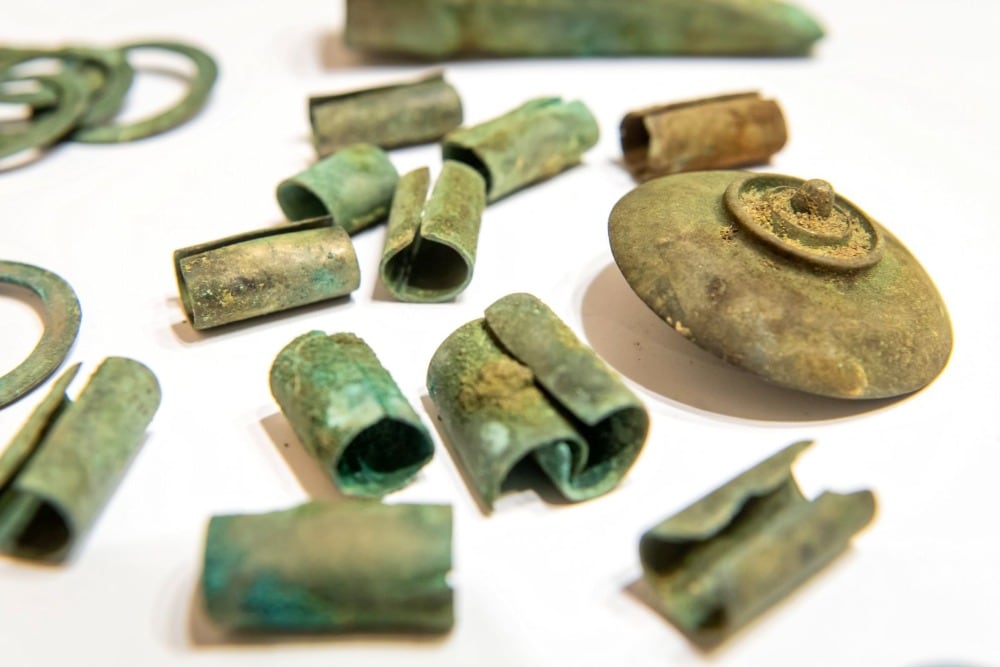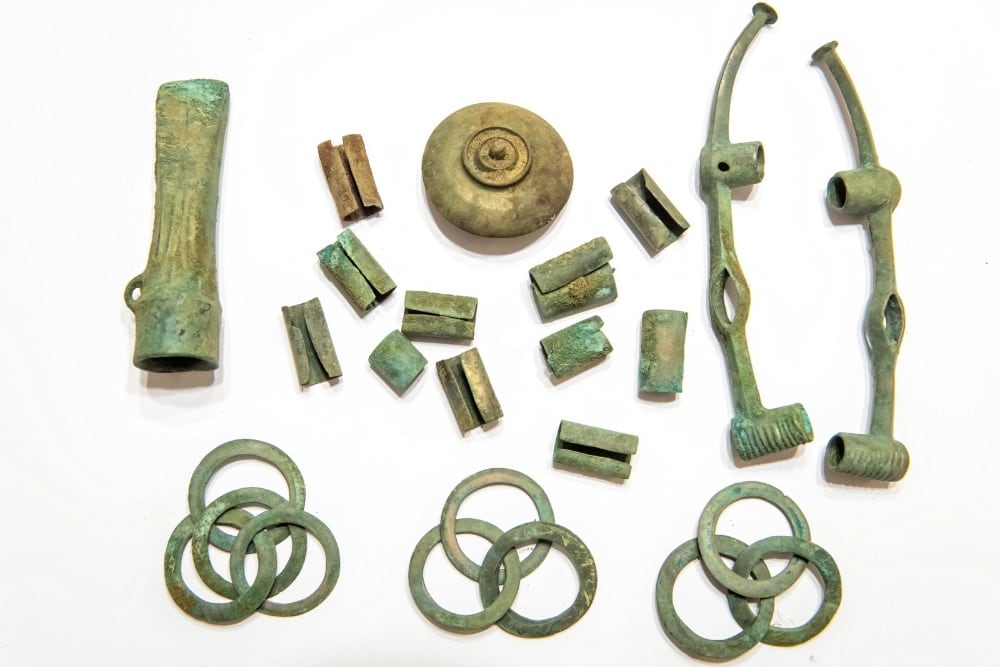Zažili jsme to s Pilotem podstatně větší u jednoho opravdu velkého mohylníků, na kterém se dělal výzkum. Přesto, tohle je prostě paráda 
Detectorists have discovered a unique full-length horse harness from the 6th century BC.
Categories: Finds and rescue research abroad , Nálezy nejenom s detektorem kovů ve východní Evropě

The 2,500-year-old Scythian harness was found by Polish detectorists who have long been working with the local heritage office. Thanks to their experience and knowledge, they have secured the site for archaeologists without damaging the finds. The result is a unique discovery: the first complete Iron Age horse harness of its kind found in Central and Eastern Europe.
Arkadiusz Kurij was searching the forest near Toruń at a joint club event of the WELES Historical and Exploration Group. At first without success, but after some time his detector sounded a very strong signal. He already knew this kind of signal, so he called the others and together they started digging. When they found the first pieces of bronze, they immediately stopped the excavation and contacted the Regional Heritage Office (WUOZ) in Toruń.
The archaeologists who were summoned after the excavation started found a very artfully decorated harness made of many different parts with decorative elements. In total, 156 bronze parts made of bronze sheet and wire were discovered. The harness is complete, missing only part of the smoker, which was often wooden among the Scythians, so it may have disintegrated over time. Along with the harness, a bronze axe of the Lusatian ash field culture was also found in the excavation.
"The preserved artefacts suggest that the front part of the harness on the horse's head must have been highly ornamental, because in addition to the main fragments we found a number of tubularand ring-shaped parts made of bronze sheet and wire," explained Professor Jacek Gackowski from the Institute of Archaeology at the Nicolaus Copernicus University (UMK) in Toruń. "This is the first find of this type in Central and Eastern Europe," he added.
Analysis of organic remains found on the artefacts suggest that the harness and axe were wrapped in burdock leaves and placed in a leather bag. The bag was then deliberately placed in sandy soil on a hill near the banks of the Vistula River. The set weighs a total of one kilogram, which in the Iron Age was quite a substantial and valuable amount of metal. The set may have been destined to be melted down and reused.
The design of the harness is typical of the metallurgy of Iron Age Scythian cultures, which at that time migrated north and west from the Eurasian steppe towards the territories of the Lusatian culture. They moved to southern Poland through the Moravian Gate into the territory of the present-day Czech Republic during the Late Bronze Age and the earlier Iron Age (7th-6th centuries BC). Interestingly, the axe is of local origin - it belonged to a member of the Lusatian culture. How it came to be in the harness bag is unknown, but may indicate contact between Scythian horsemen and the local population.
The artefacts will be analysed and conserved by a multidisciplinary team of researchers from the Institute of Archaeology at Nicolaus Copernicus University in Toruń. The team hopes to be able to refine the date of the harness's deposition. Conservation with analysis may take more than nine months, after which the find should be displayed in a local museum.
Roman Nemec




Sources: scienceinpoland.pap.pl, thehistoryblog.com, polandin.com
The article is included in categories:
- Archive of articles > Archaeology > Finds and rescue research abroad
- Archive of articles > Archaeology > Finds and rescue research abroad > Nálezy nejenom s detektorem kovů ve východní Evropě
Post
Hezké  tehdy se ten jezdec musel neskutečně blyštit, než ten bronz zezelenal
tehdy se ten jezdec musel neskutečně blyštit, než ten bronz zezelenal 
To Zepr
Krásné poznání , gratulace...
Pěkné 








